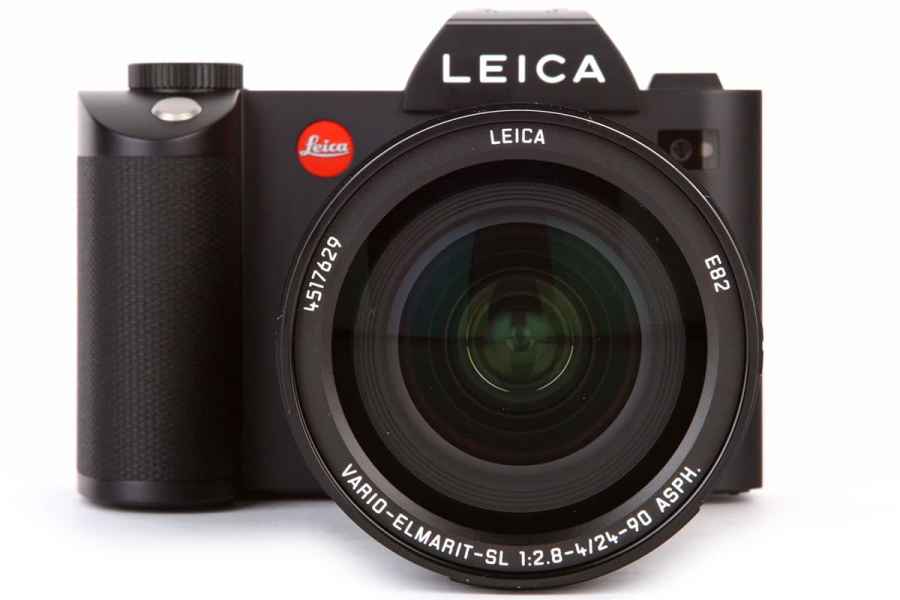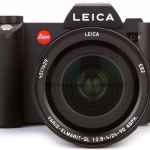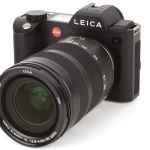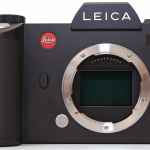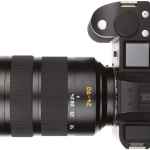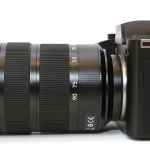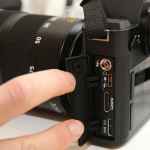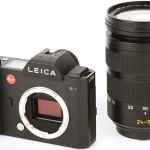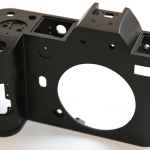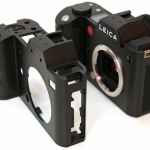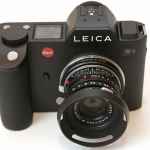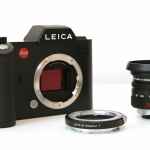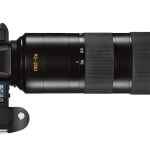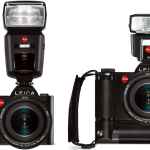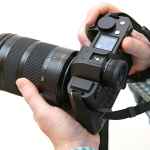- The Leica SL is an SLR-style full frame compact system camera
- The SL’s square, angular design is a little reminiscent of the original Sony Alpha 7
- Top plate controls are sparse; a control dial, plus shutter, movie and live view mode buttons
- The minimalist rear controls are borrowed from Leica’s medium format DSLRs
- The 24-90mm f/2.8-4 lens is 138mm long and weighs fully 1140g
- Files can be recorded to both SD cards in duplicate, or to the second when the first is full
- The SL has PC sync, USB 3.0, and HDMI sockets. Headphone and mic sockets can be added using an adapter.
- On the front there are lens release and DOF preview buttons
- The body shell is milled from solid blocks of aluminium in two parts
- Here’s the body shell alongside the finished camera
- Leica M-mount lenses can be used via the existing mount adapter
- The Leica M-Adapter T was launched alongside last year’s Leica T
- The upcoming 90-280mm f/2.8-4 is vast, as this product shot reveals
- Accessories will include the SF64 and SF40 flash units, and a vertical grip
- The SL is one of the largest mirrorless cameras yet made
- AP’s Michael Topham gets to grips with the Leica SL
Leica SL 601: Hands-on First Look
At a glance:
- 24-million-pixel full-frame CMOS sensor
- ISO 50-50,000
- 4.4-million-dot ‘EyeRes’ EVF
- Leica L mount
- 11fps continuous shooting
- 4K video at 30fps
- £5,050 (body only)
- Leica 24-90mm f/2.8-4 lens £3,150
- Available 16 November 2015
See our news story on the launch of the Leica SL (Typ 601)
Read our interview with Leica: The Leica SL – the ‘R10’ DSLR that never was
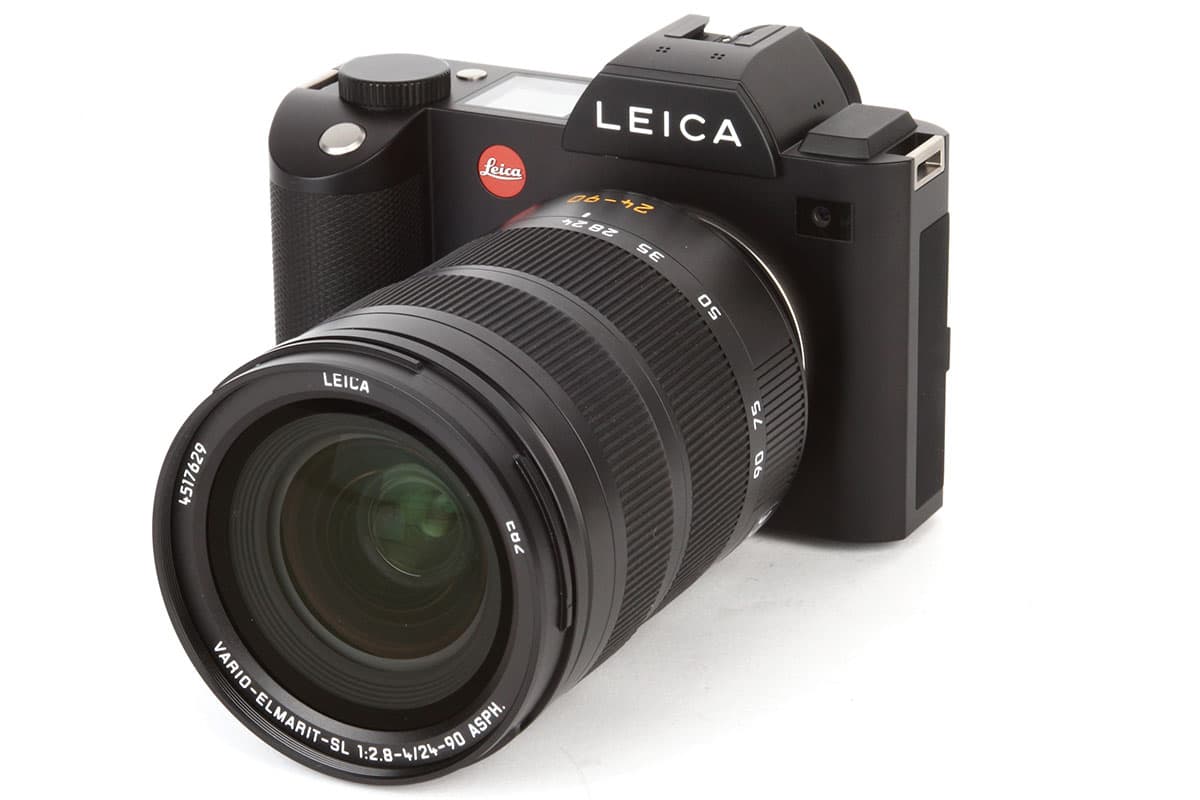
The SL’s square, angular design is a little reminiscent of the original Sony Alpha 7
For a company that’s most associated with its old-fashioned M-system rangefinders, Leica has developed a habit of surprising us. Last year it launched the Leica T (Typ 701) aimed at fashion-conscious professionals, and earlier this year the Leica Q (Typ 116) premium full-frame compact, with its M-like styling and extraordinary electronic viewfinder. But while we weren’t surprised when Leica told us it was finally making a full-frame mirrorless camera, we didn’t quite expect it to look like this.
https://link.brightcove.com/services/player/?bctid=4568429400001
With its central viewfinder, the new Leica SL (Typ 601) full-frame CSC looks like an SLR, and specifically borrows much of its design and control layout from the firm’s S (Typ 007) medium format SLR. But it uses an electronic viewfinder that’s of even higher quality than the Leica Q’s, which itself was previously the best we’d ever seen. But it’s trumped by the SL’s 4.4-million-dot EVF which offers a refresh rate of 60fps, combined with 0.8x magnification and 100% coverage. The result is an astonishing viewing experience that’s unlike anything else on the market.
Features
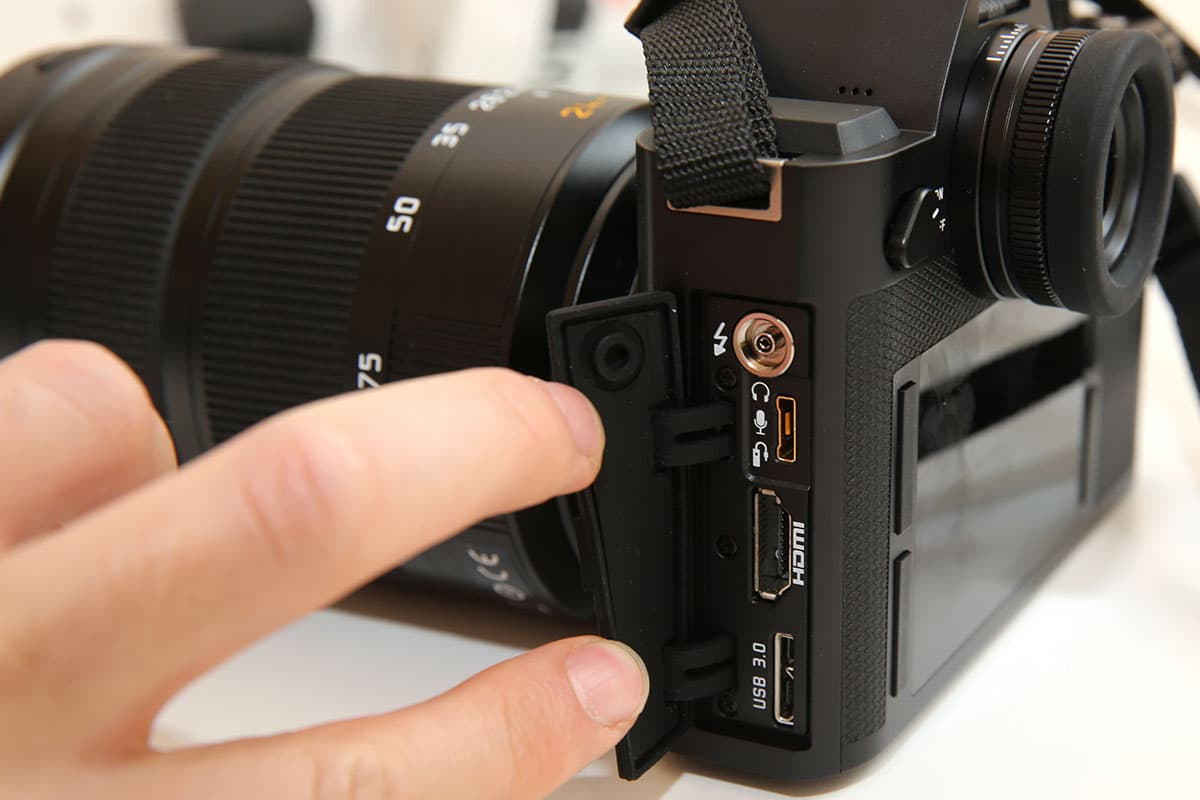
The SL has PC sync, USB 3.0, and HDMI sockets. Headphone and mic sockets can be added using an adapter
At the SL’s heart is a 24MP full-frame CMOS sensor, with no optical low-pass filter for maximum resolution. Leica says it uses a specially designed pixel structure that can accept light at a more oblique angle than conventional sensors, and this allows it to work better with a wider range of lenses, including M-mount rangefinder wideangles. In concert with the Maestro II processor, the sensor offers a sensitivity range of ISO 50-50,000, which should keep most photographers happy, and raw files are recorded as 14-bit DNGs.
The SL uses the same lens mount as the APS-C Leica T, now renamed the ‘L’ mount. Apparently it was designed with full frame in mind from the start; it’s noticeably larger in diameter than the Sony E mount used by the Alpha 7 series, so the full-frame sensor doesn’t seem anywhere near so squeezed in, as you can see from the picture below.
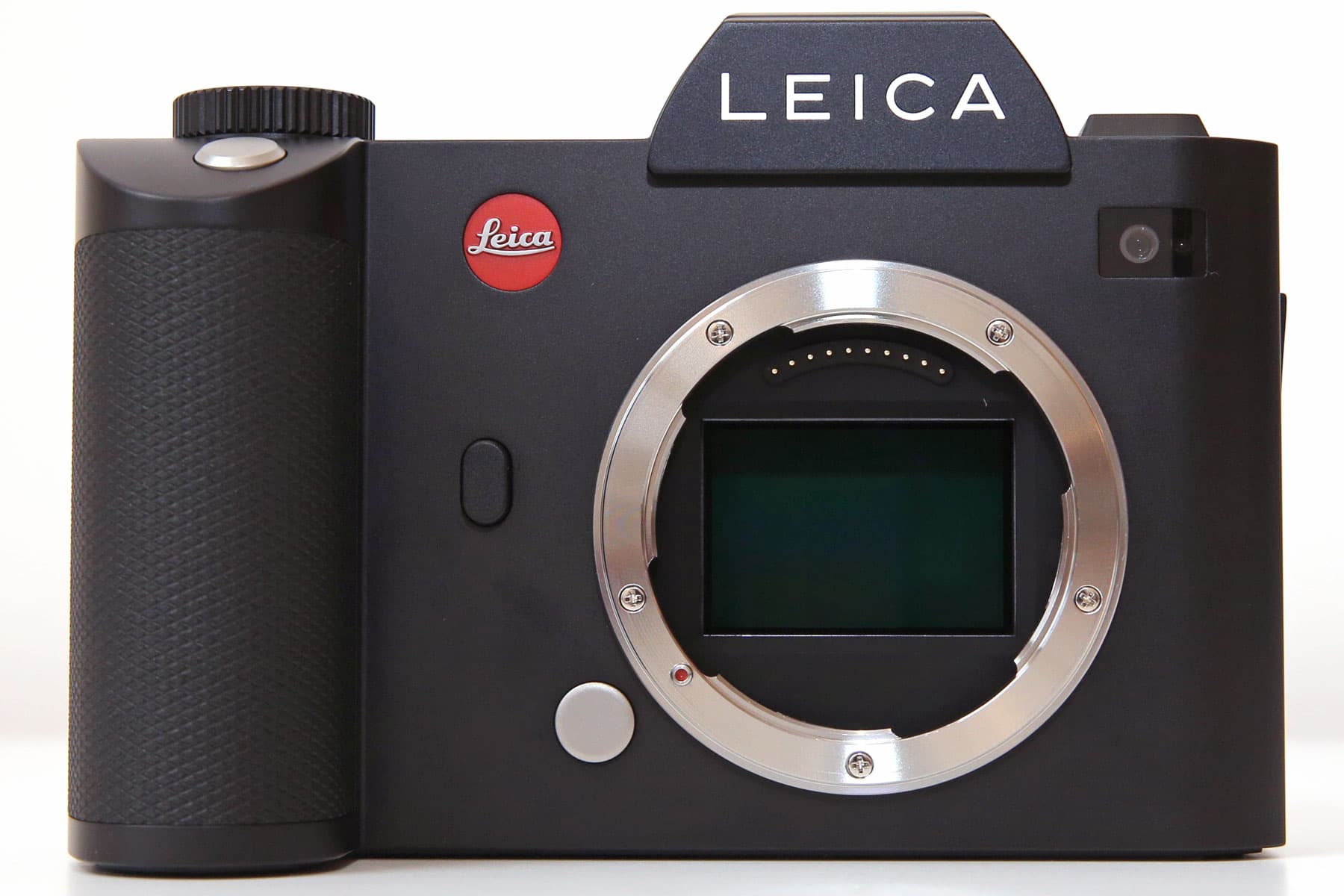
The lens mount is the same as that used on the Leica T, now called the L-mount
Autofocus uses contrast detection, with the focus area selectable across almost the entire frame, and face detection available. Leica boldly asserts that it’s the fastest of any full-frame system camera, either CSC or DSLR, and while it remains to be seen whether this claim stands up in the real world, in our time spent hands-on with the camera it certainly seemed very snappy. Continuous shooting is available at fully 11fps with focus and exposure fixed, or at 7fps with live view, AF and autoexposure between frames. Shutter speeds range from 1/8000-60secs, or up to 30 minutes in bulb mode, with 1/250sec flash sync. Files are recorded to dual SD card slots; they can either be duplicated to both cards simultaneously, or recorded to the second when the first is full.
Perhaps surprisingly, the SL’s video credentials are pretty impressive too. It can record 4K video at 30fps using a Super-35 crop of the sensor; as this is a similar area to APS-C, it will work with lenses designed for the Leica T, allowing true wide angle shooting. 4K footage can be recorded internally to SD cards in 4:2:0 8-bit mode, or to an external recorder over HDMI in 4:2:2 10-bit mode. Alternatively full HD video can be recorded at up to 120fps. A dedicated live view mode shows a 16:9 cropped view, with optional focus peaking and zebra pattern overexposure warning displays. Slightly disappointingly though, microphone or headphone sockets can only be added via an adapter that plugs into the camera’s proprietary multi-connector socket. You can read more about the SL’s video capability on our sister site The Video Mode.
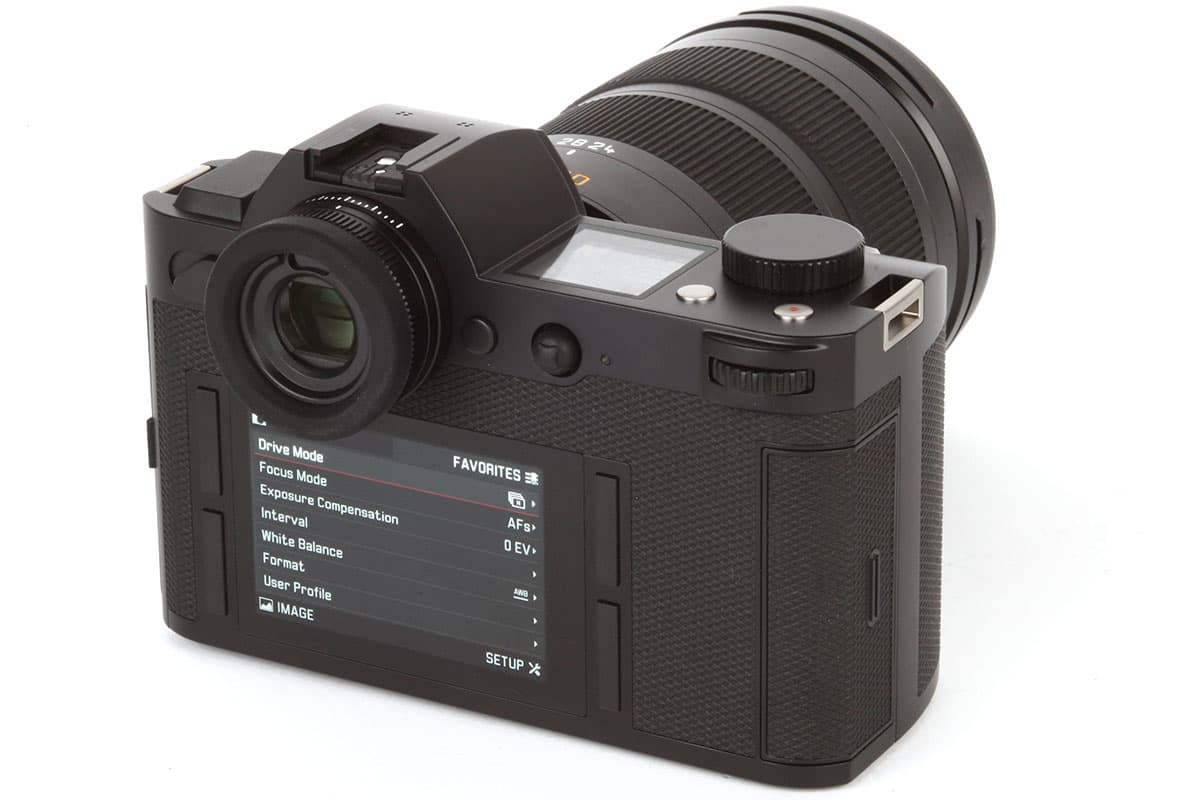
The minimalist rear controls are borrowed from Leica’s medium format DSLRs
The back of the camera hosts a 3in 1.04-million-dot LCD, with a similar touch interface to the Leica Q (including AF area selection). Wi-Fi and GPS are both built in, and a free Leica SL app will be available for both Android and iOS offering image sharing and full remote control over the camera.
Build and handling
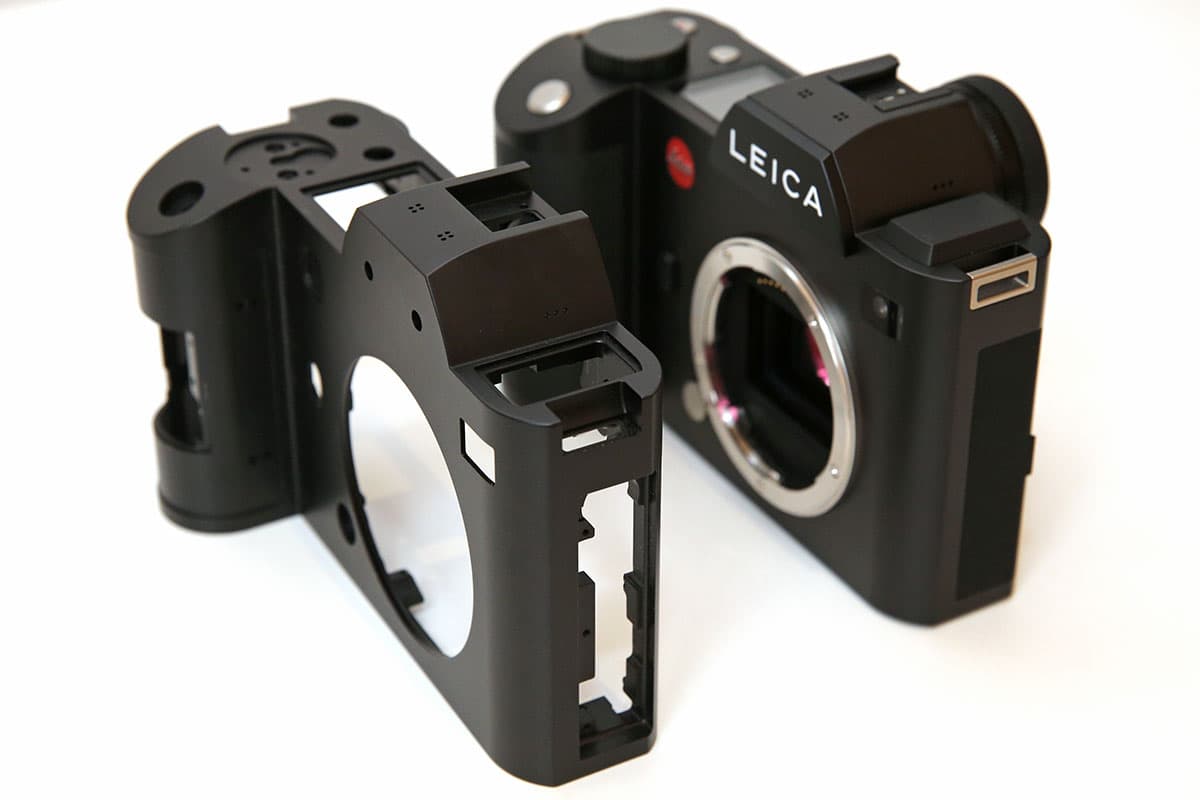
Here’s the body shell alongside the finished camera
In typical Leica fashion, the SL is built like a tank. Its body shell is milled from two blocks of aluminium alloy, giving exceptional rigidity, and it’s sealed against dust and spray. Leica says this construction method is stronger than using a conventional magnesium alloy body shell, but more expensive to manufacture, The prominent handgrip is rather chunky, though, and I didn’t find it especially comfortable to hold.
Controls are borrowed from the Leica S, which means they’re rather unconventional. Two top-plate dials change exposure settings, and a joystick on the back selects the focus point and navigates menus. But beyond this there are relatively few external controls, with most of the heavy lifting done by four buttons around the touchscreen. These provide access to different sections of the menu and to user-selectable functions such as ISO or white balance. This approach initially feels odd compared to button-encrusted pro DSLRs, but seems to work OK.
Lens compatibility
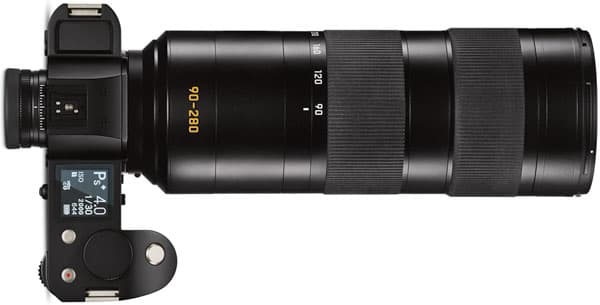
The upcoming APO- Vario Elmarit-SL 90-280mm f/2.8-4 image-stabilised telezoom will have a detachable tripod mounting foot
Mirrorless cameras are notable for their broad lens compatibility, and the Leica SL (Typ 601) is no exception. Indeed Leica says it will work with practically every lens the company has ever made. Only one native lens, the Leica Vario-Elmarit-SL 24-90mm f/2.8-4 Asph standard zoom will be available at the time of launch. Costing £3,150, it includes optical image stabilisation. This will be followed by the enormous APO-Vario-Elmarit-SL 90-280mm f/2.8-4 optically stabilised telezoom in the second quarter of 2016, and then the Summilux-SL 50mm f/1.4 Asph in the last quarter. Leica is already claiming that this will be the best 50mm autofocus lens ever made.
According to Leica, the SL lenses are designed to give exceptional image quality at all focal lengths and focus distances. On that note, the zooms will have impressively close minimum distances; from 0.3 to 0.45m for the 24-90mm, and 0.6-1.38m for the 90-280mm.
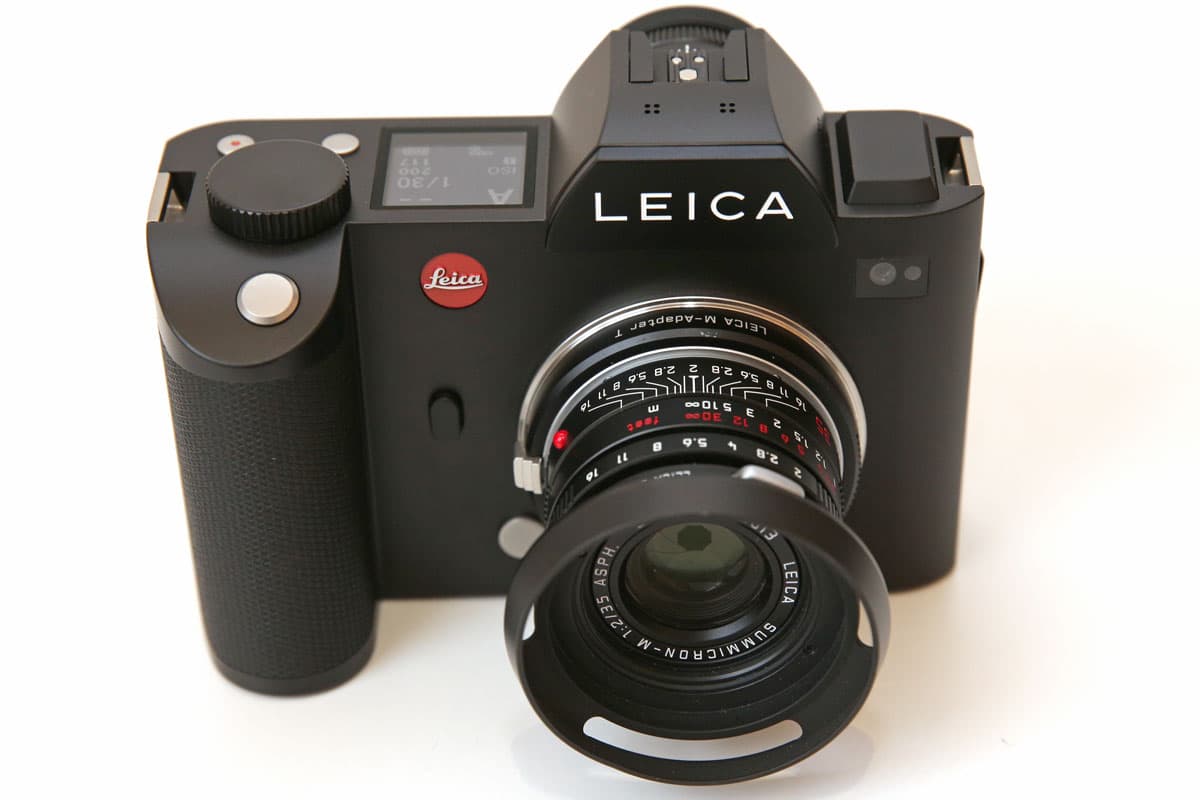
Leica M-mount lenses can be used via the existing mount adapter
The SL will also work with existing lenses designed for the Leica T, automatically switching to a 10.7MP 1.5x crop mode. More importantly, it can use almost any M-mount rangefinder lens via the adapter that was introduced with the T, which includes 6-bit coding for lens recognition. Leica will also make a PL-mount adapter for cine lenses, with adapters for S-mount medium format and legacy R-mount SLR lenses due to appear next year. So while native SL lenses will be sparse to start with, any number of alternatives can be used.
Accessories
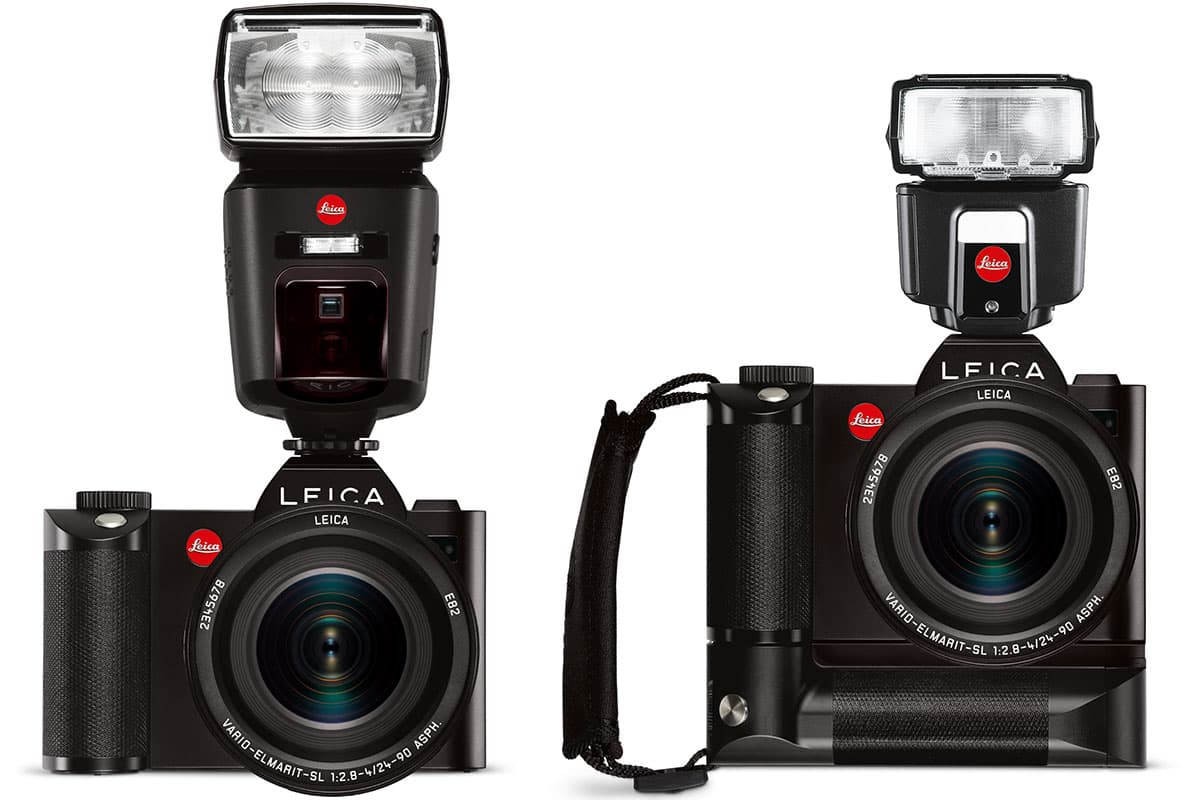
Accessories will include the SF64 and SF40 flash units, and a vertical grip
System cameras need a matching set of accessories, and Leica intends to oblige over the next few months. Firstly there will be two flashes, the SF64 and SF40, with guide numbers of 64 and 40 respectively, that should be available this year. The latter is clearly a rebadged Nissin i40 – but that’s a good thing, as it’s one of our favourites. A vertical grip with a second battery and duplicate set of controls will be available at the start of 2016.
What now for the Leica T?
Leica’s decision to make a full frame camera with the same mount as the T, but a very different design philosophy, might look like the death-knell for its style-conscious APS-C sensor mirrorless system. However it seems this is far from the case; the T will remain in the lineup, but be renamed the ‘TL’ (with the L signifying the mount). The camera will also get a firmware update to allow it to work with SL full frame lenses.
Leica SL: First impressions
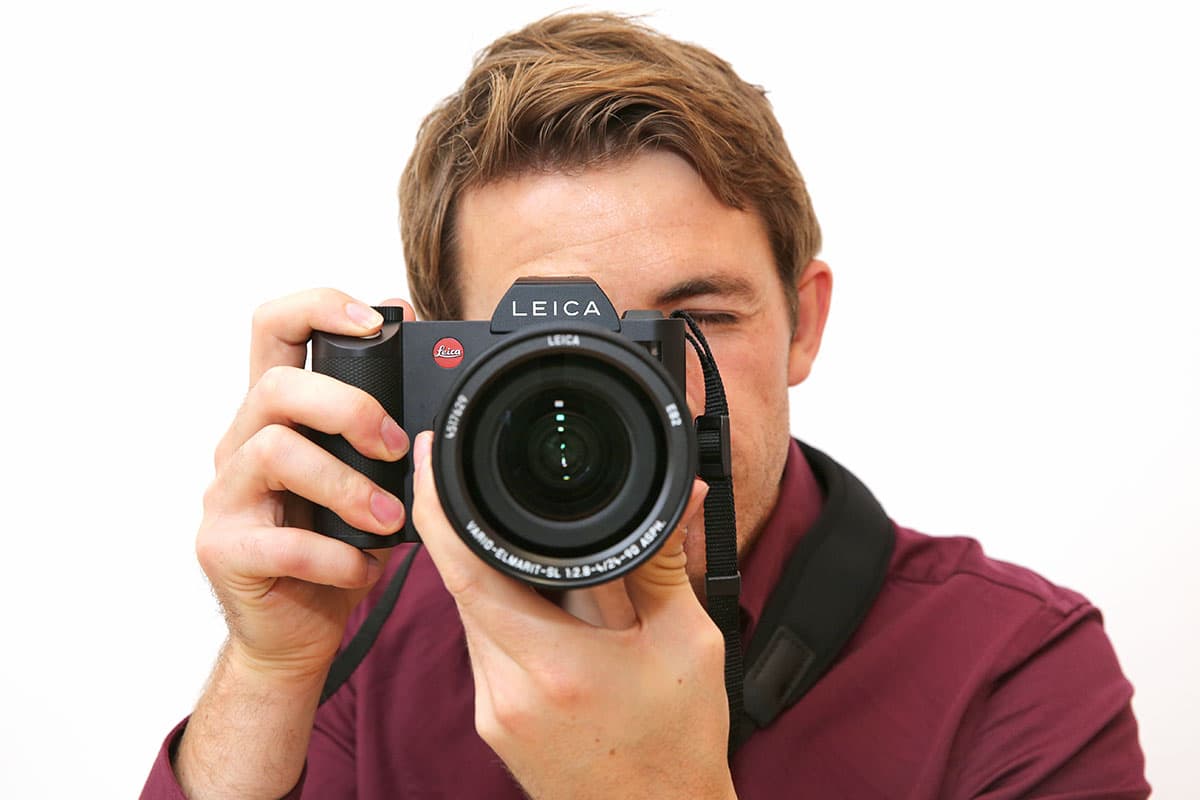
AP’s Michael Topham gets to grips with the Leica SL
The SL (Typ 601) is certainly a bold move from Leica. With a price tag of £5,050 (body only) and another £3,150 needed for its 24-90mm lens, it’s aimed squarely at working photographers prepared to pay a premium for quality. In context, you can pick up the 42MP Sony Alpha 7R II along with its Zeiss Vario-Tessar T* FE 24-70mm f/4 ZA OSS zoom for around £3,400 altogether. The Leica kit is also heavy and bulky in comparison, especially the huge 24-90mm lens, although it brings the advantage of a longer telephoto end for shooting portraits.
See our gallery of full-size sample images on Flickr
While the SL most strongly resembles the S within Leica’s existing lineup, it’s interesting to see how Leica has also borrowed aspects of other models. Its touchscreen interface comes from the Q, while the milled aluminium body is reminiscent of the T. However, there’s notably very little M-series rangefinder DNA in the mix. According the Stephan Schulz, Head of Product Management for Leica’s Professional Camera Systems, this is in part because the camera is aimed at professional photographers who are used to working with SLRs. But it’s also because a rangefinder-like form factor wouldn’t work well with the large, heavy zoom lenses that Leica has made for the SL (and having used large lenses on Fujifilm’s X-Pro1, I’d be inclined to agree).
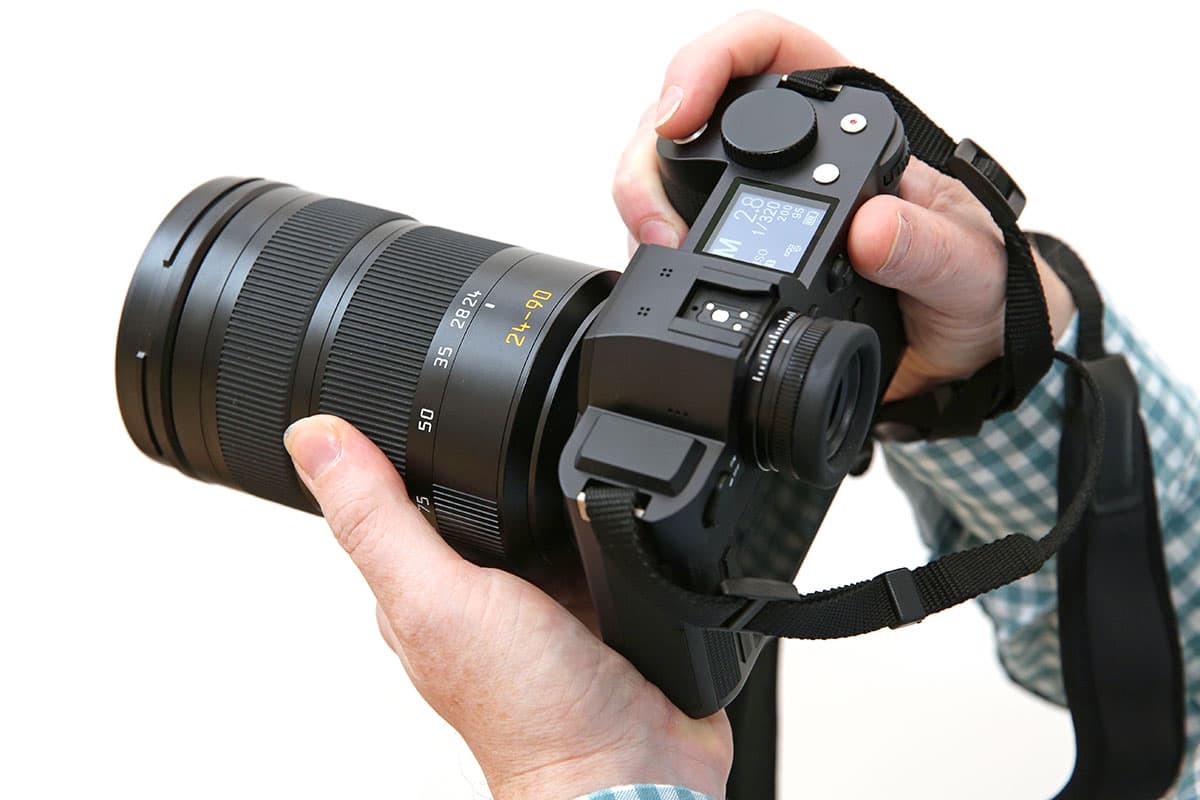
The SL is one of the largest mirrorless cameras yet made
Like many others we’d have loved to see an interchangeable lens ‘Leica QL’ with traditional control dials and a rangefinder form factor, but we suspect Leica is wary of making a modern compact system camera that treads too heavily on the M system’s toes. However we can’t help but feel that such an L-mount version of the Q that’s also capable of using M-mount lenses is a camera Leica should really be making.
Overall though there’s no doubt the SL is a very impressive piece of kit. It’s solidly made, very fast, and has an astonishing EVF. The shutter release is beautifully soft and quiet, and autofocus is silent; overall the camera feels impressively refined. As with the Leica Q, there’s lots of class-leading technology here, and we fully expect the SL will deliver superb results for those who can afford it. It will be available from 16 November.

